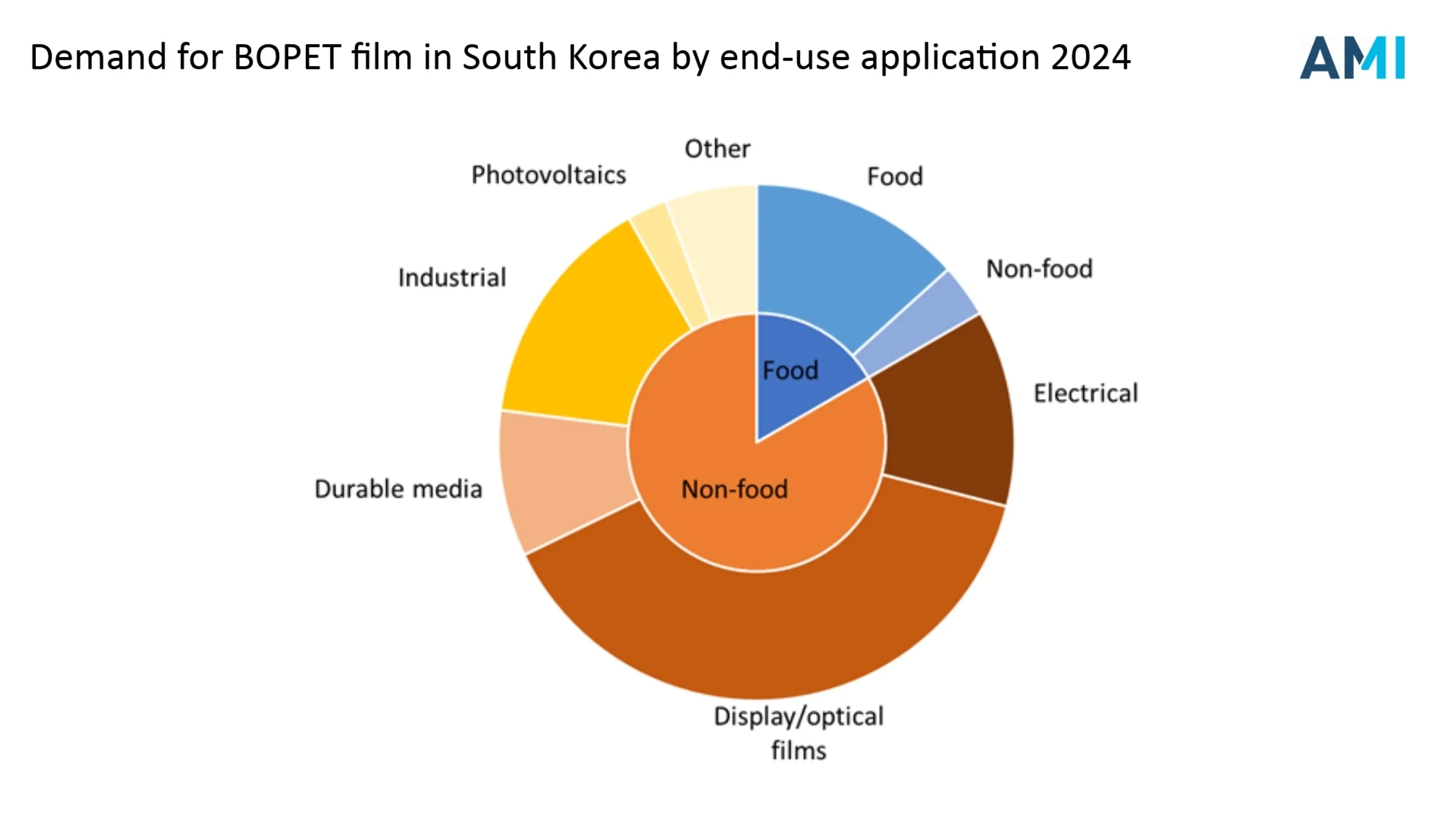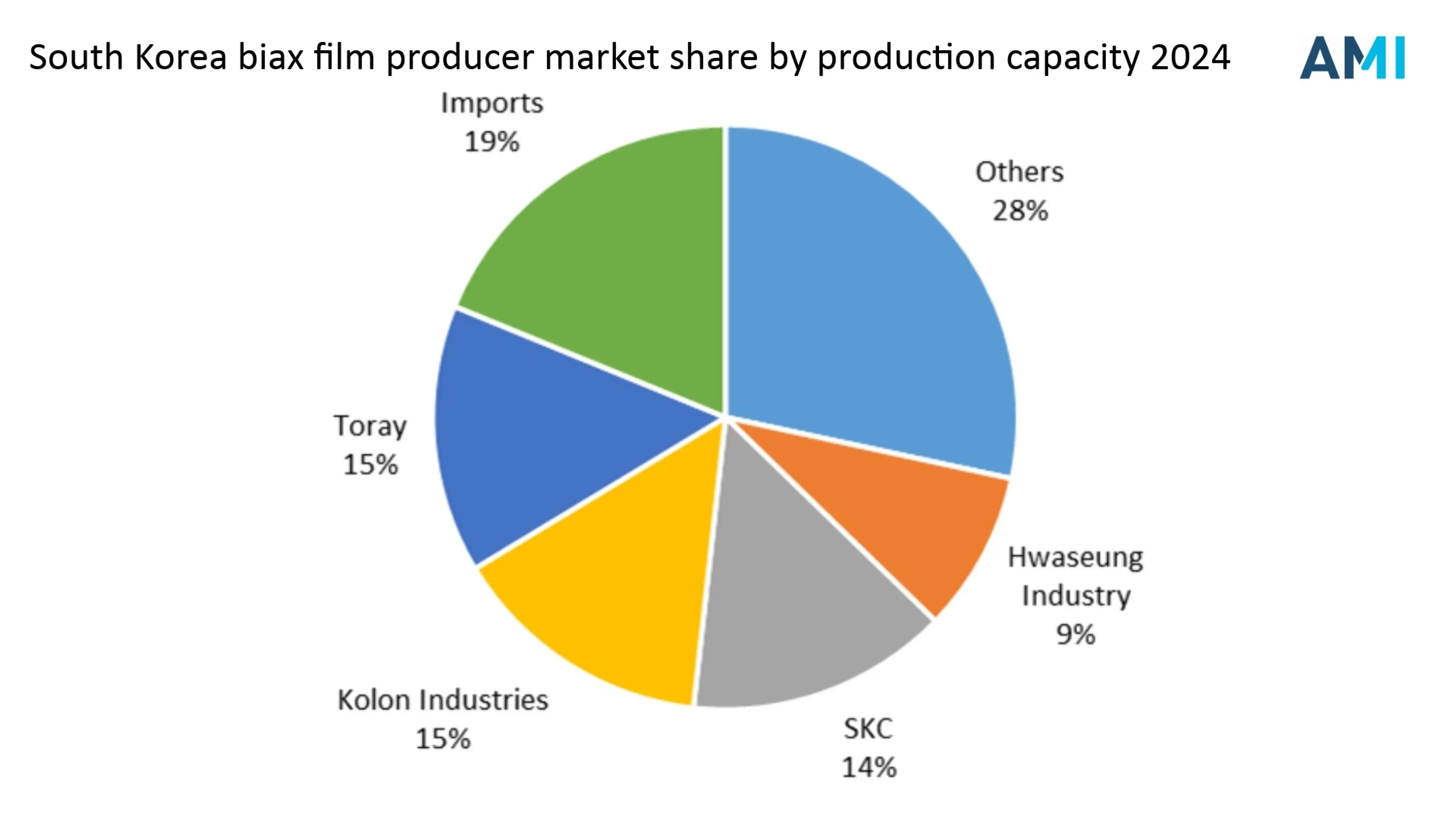South Korea’s biax film market
13 August 2025
South Korea’s biaxially oriented film industry is undergoing a strategic transformation as the country navigates a period of economic uncertainty and intensifying global competition. Once a symbol of rapid industrial success, South Korea now faces challenges across key sectors including petrochemicals, semiconductors, and automotive manufacturing. Amid a contraction in GDP growth and reduced investment from major conglomerates, private equity firms are stepping in to fill the gap, with increased deal activity expected through 2025.
Biax film demand and supply
The biax film sector, long supported by South Korea’s advanced manufacturing base and global players such as Samsung, LG Chem, and SK Group, remains a leader in technical film innovation. However, demographic shifts and a growing emphasis on sustainability are reshaping demand patterns.
BOPET holds around two thirds of the South Korean biax film market in capacity terms and has benefited from its strong position in optical films, electronic films, new energy films and other more niche film applications, whose growth has helped to counter the declines in food packaging. BOPP accounts for around one third of biax film capacity, having contracted as film producers have decommissioned older equipment.
Expansion in the coming years will come from the country’s BOPA and BOPE film capabilities.

South Korea is the largest BOPET producing country in North East Asia, and non-packaging applications account for the majority of the market, where historically, demand for technical BOPET films has been high. Given the country’s focus on innovation and the development of its electronics industry over the past decade, display and optical films remain the largest segment.
Modest growth remains despite a slowdown in recent years, affected by the rise of Chinese optical films, the recent shift in display technology and slowing sales in smartphones, tablets and home appliances.
South Korean display manufacturers have relinquished the LCD TV market to Chinese competitors and shifted their focus towards OLED production. Samsung Display exited the LCD market in 2022 after over 30 years and LG Display soon followed, selling its only remaining LCD production unit to China’s TCL in early 2025. Although OLED panels use fewer BOPET layers than LCD panels, the screens are generally larger in size and are becoming increasingly mainstream in the smartphone display segment and the growing market for information displays in the automotive sector. The industry’s transition away from LCD displays however, has had knock-on implications for the local manufacturers of polarizing film, a component used in LCDs. Both Samsung SDI and LG Chem have sold their polarizing film businesses to Chinese competitors, unable to viably compete with their lower prices. Industrial films have also felt the pressure from Chinese rivals and in response, major players SK Microworks and Kolon Industries have recently joined forces to establish a more competitive position within the segment.

Imports flood the food packaging market
With limited growth opportunities for commoditised BOPP packaging films, domestic production is falling. Despite protectionist measures, imports of commodity BOPP films continue to increase, impacting local production volumes and encouraging local producers to move more towards speciality and value-added films. That said, food packaging remains an important application for BOPP, with snacks and dried foods the largest sub-segment. South Korean snacks often have unique, bold and spicy flavours and ingredients that reflect the local cuisine, with popular varieties including rice cakes, seaweed snacks, spicy ramen noodles, and various types of flavoured chips. Convenience stores, supermarkets, and online platforms are the primary distribution channels for packaged snacks, where domestic and international brands continue to compete for consumer attention.
Leveraging expertise in technical films South Korea has strengths in developing highly technical films, offering value growth potential across both selected packaging and added value technical applications, and the country remains a leading exporter of products including cars, electronic goods, and semiconductors. The country’s BOPP industry is also one of the few able to produce ultra-thin films required for the growing EV application. The global shortage in capacitor film has benefited the few film producers able to supply into this high value niche. Although resin demand is small, with films in the ultra-thin category typically 3 microns thick, demand for these films continues to grow strongly encouraging further investment in this area. Despite current headwinds, South Korea’s expertise in high-performance technical films positions it well for selective growth. As the industry pivots toward innovation and value creation, new investment opportunities are emerging across both packaging and non-packaging applications.
You can explore our wide range of biax film-related products at AMI by clicking here, this includes our latest authoritative market report on the global BOPP market. You can also enquire about our other market reports, databases, and paid-for subscription newsletter, ORIENTATE.